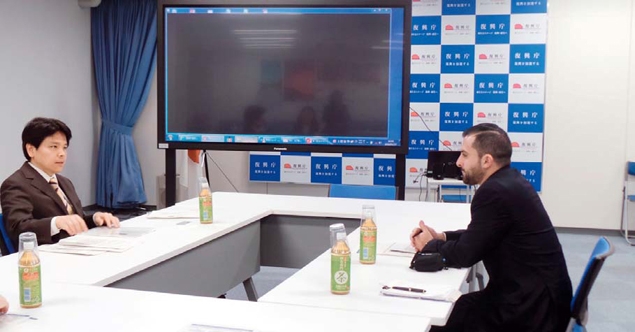OTHER
Road to recovery: Japan’s victory over the largest earthquake in its history
September 20, 2016

In March 11, 2011, Japan was rocked by the largest earthquake in its history, and was followed by tsunami waves that caused extensive destruction in Tohoku. The catastrophe became worse with the meltdown of worse with the meltdown of the Fukushima nuclear reactor. The quake and tsunami resulted in 15,893 killed, 2,565 missing and 6,512 njured. Around 1.126 million homes were damaged, including around 122,000 homes totally destroyed. The total losses were estimated at •22 trillion (around $280 billion).
In order to deal with the incident and ensure aid to a large number of residents of areas hit by the quake and tsunami, the Japanese government established a special body called the Reconstruction Authority to carry out this mission and restore things to their normal situation amidst domestic and international fears.
Al-Anbaa visited the authority’s premises, and was received by media and international affairs advisor Shinia Fujita, who spoke about its achievements, the most important of which is the removal of apprehensions of many countries that stopped importing Japanese products, particularly food, out of fear of radiation.
Studies confirmed that the percentage of radiation in Tokyo and Fukushima is less than in cities like New York and Seoul, and this prompted 16 countries including Canada, Australia and Malaysia to lift all restrictions on Japanese imports, while some countries, including the US and Kuwait, continue to ask for certificates before importing, which Fujita said is no longer necessary. The nuclear accident has been contained, vast surrounding areas around it were cleaned, and work is still going on in this field. He said most houses, fishing docks, gardens and schools were built within 4.5 years along with other facilities that were destroyed by the quake, and this led to the reduction of the number of those seeking shelter from 470,000 to 180,000.
Fujita explained that the role of the authority is not only to reconstruct, but also in creating a healthy environment and providing the infrastructure and fields of life and work for those returning. The problem that faced the government was in that investors and citizens were exchanging roles with regards to who takes the first step to return – the investor to create opportunities that encourage the citizen to return to his region, or return of the citizens to attract investors. So the government, through the authority, plugged this hole and pushed things positively forward.
Fujita tanked Kuwait as it was among the first to help through its oil grant, which is still in the memory of the Japanese today. The Japan experience with reconstruction proves the tremendous ability of the Japanese people to rise and march stronger, to always be the example that should be followed in the world.
In order to deal with the incident and ensure aid to a large number of residents of areas hit by the quake and tsunami, the Japanese government established a special body called the Reconstruction Authority to carry out this mission and restore things to their normal situation amidst domestic and international fears.
Al-Anbaa visited the authority’s premises, and was received by media and international affairs advisor Shinia Fujita, who spoke about its achievements, the most important of which is the removal of apprehensions of many countries that stopped importing Japanese products, particularly food, out of fear of radiation.
Studies confirmed that the percentage of radiation in Tokyo and Fukushima is less than in cities like New York and Seoul, and this prompted 16 countries including Canada, Australia and Malaysia to lift all restrictions on Japanese imports, while some countries, including the US and Kuwait, continue to ask for certificates before importing, which Fujita said is no longer necessary. The nuclear accident has been contained, vast surrounding areas around it were cleaned, and work is still going on in this field. He said most houses, fishing docks, gardens and schools were built within 4.5 years along with other facilities that were destroyed by the quake, and this led to the reduction of the number of those seeking shelter from 470,000 to 180,000.
Fujita explained that the role of the authority is not only to reconstruct, but also in creating a healthy environment and providing the infrastructure and fields of life and work for those returning. The problem that faced the government was in that investors and citizens were exchanging roles with regards to who takes the first step to return – the investor to create opportunities that encourage the citizen to return to his region, or return of the citizens to attract investors. So the government, through the authority, plugged this hole and pushed things positively forward.
Fujita tanked Kuwait as it was among the first to help through its oil grant, which is still in the memory of the Japanese today. The Japan experience with reconstruction proves the tremendous ability of the Japanese people to rise and march stronger, to always be the example that should be followed in the world.